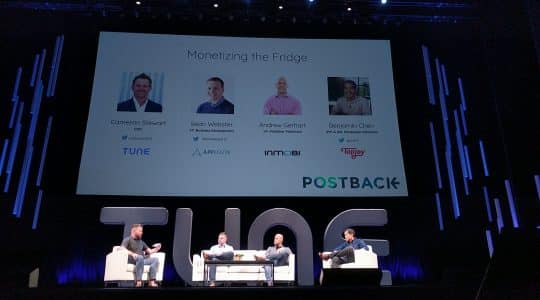Attribution is the future of affiliate marketing. Most conversations around attribution hit one major roadblock - how will publishers respond to any model that doesn't payout 100% to the last click? Klout Moments offers a transparent example for how advertising attribution could work.
As you may know, we’ve been working on an attribution model for affiliate marketing for some time with various tests, conversations, and feedback. Most conversations around attribution always arrive at one big question mark – how will publishers respond to any model that doesn’t reward the last click 100% of the conversion?
My reply to this has always been an attribution solution built around transparency. The most important thing for any publisher is to understand why they’re being compensated. With transparently defined compensation events, a publisher can adjust their campaigns based on this knowledge.
When we talk about attribution, what we are really measuring is the amount of influence an individual marketing campaign had on the purchase decision. This week, I stumbled on something I thought really highlights the importance and effectiveness of providing attribution information on influence.
Transparent Influence Measurement
Klout, the platform for measuring your social influence online, announced an new feature called “Moments.” This feature shows you your most influential posts and mentions. It directly shows you how each of these influential moments impact your Klout score, giving you a baseline for improving your overall impact on others.
Now, whether you agree with modifying your social behavior to have more “influence” or not, you have to see what they’re doing here. They’re showing influencers why they have the Klout score they have and giving them the analytical insight to see how they might improve that score.
Influence in Advertising
We need to start thinking about advertising as influence, rather than persuasion. I mean, that is the real core of any advertising or marketing campaign. Influence is the reason major brands use celebrity spokesmodels. Influence is a contributing factor behind putting products in the hands of specific online personalities.
When you think about about advertising as persuasion, the result is binary. The campaign either works or it doesn’t. The user converts or they don’t. Persuasion is a last click model.
In a pure attribution model for advertising, publishers should be compensated for their influence on a user’s purchase decision or brand engagement. These same publishers should be shown exactly why they received that portion of the influence. If a publisher optimizes their interactions with users to get a bigger piece of the attribution, they can make more money per transaction. Or perhaps some publishers will be happy with their current level of influence and can scale revenue based on transaction volume.
Attributing Influence to Purchase Behavior
What I want to know is how much influence any individual marketing campaign had on the purchase path of an individual user. The difficult issue here is certainly tracking the path of the user without violating major privacy policies, which is a separate post entirely.
With the advancement in mobile technology and the ability of the user to cut out irrelevant marketing noise, I think we’ll see a more willing generation of users who don’t mind recognizing that some form of advertising impacted their decision. I mean, some users of Klout spend hours telling the world who is influencing them on various topics – could we see a world where people broadcast the influencers of their purchase decisions as well?
I’m really interested to see how this level of transparency on the new Klout “Moments” changes the way people use the platform. For many people Klout has been little more than a vanity score.
If Klout is really going to show me, in a simple, summarized way, how I’m influencing the world, that’s fairly interesting. If some day in the future my advertising campaigns make me more money because their influence was high but they weren’t the last click, I think that will be an extremely fun time to be an affiliate.
Author
A digital marketer by background, Peter is the former CEO of TUNE, the enterprise platform for partner marketing. In 2018, he sold TUNE’s mobile measurement product to Branch, unifying measurement and user experience. He led TUNE’s efforts to bring better management technology and automation to marketing partnerships, across affiliates, influencers, networks, and business development relationships. Follow @peterhamilton




Back in 2008, I suggested a model that provided for affiliate attribution for multiple referral sources, distinguishing and rewarding the roles of different types of affiliates and influencers.
http://www.abestweb.com/forums/onecause-530/proposal-separate-channel-charity-incentive-loyalty-113164.html
[…] http://www.hasoffers.com/blog/klout-moments-insights-inspire-advertising/ […]